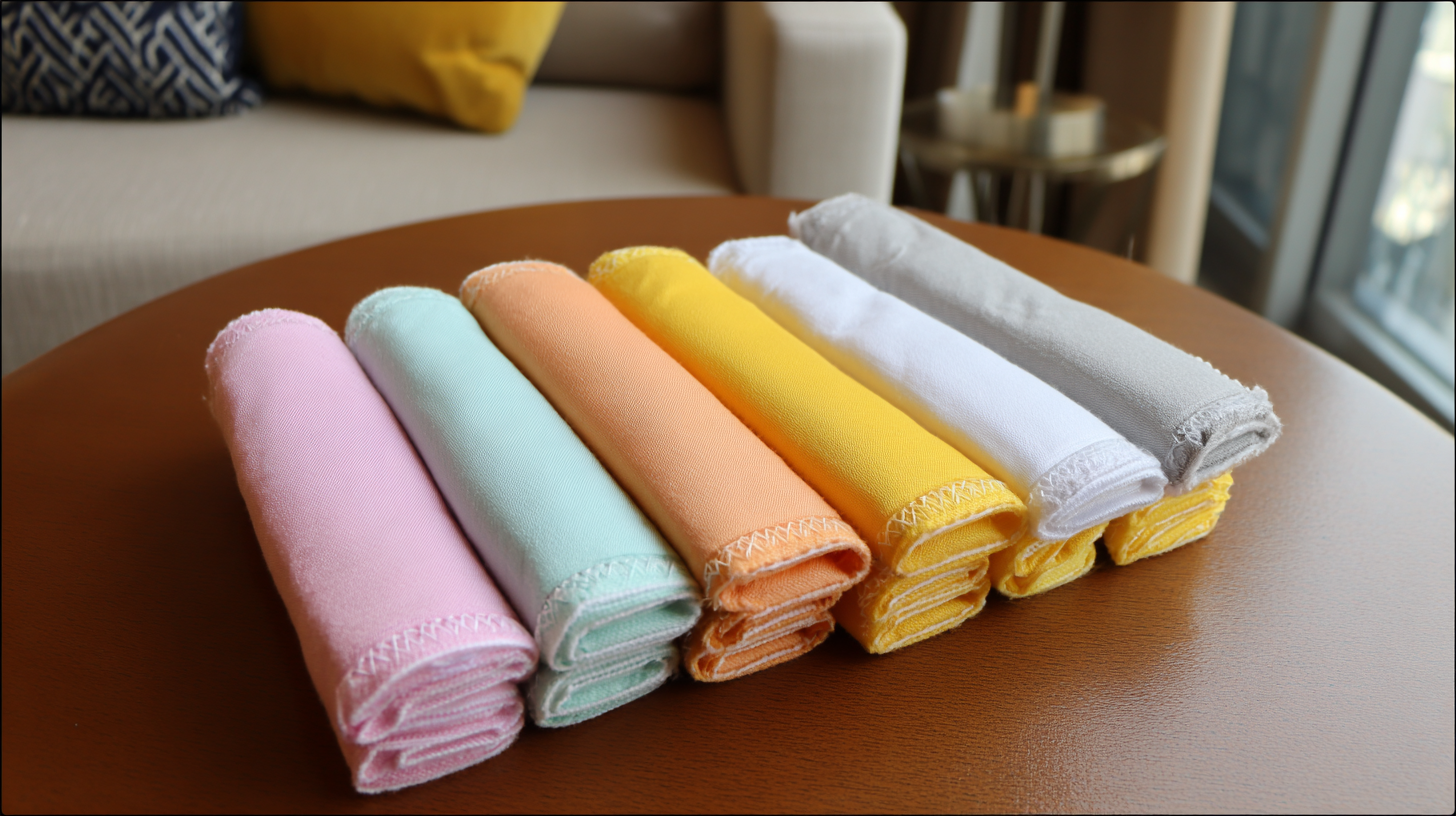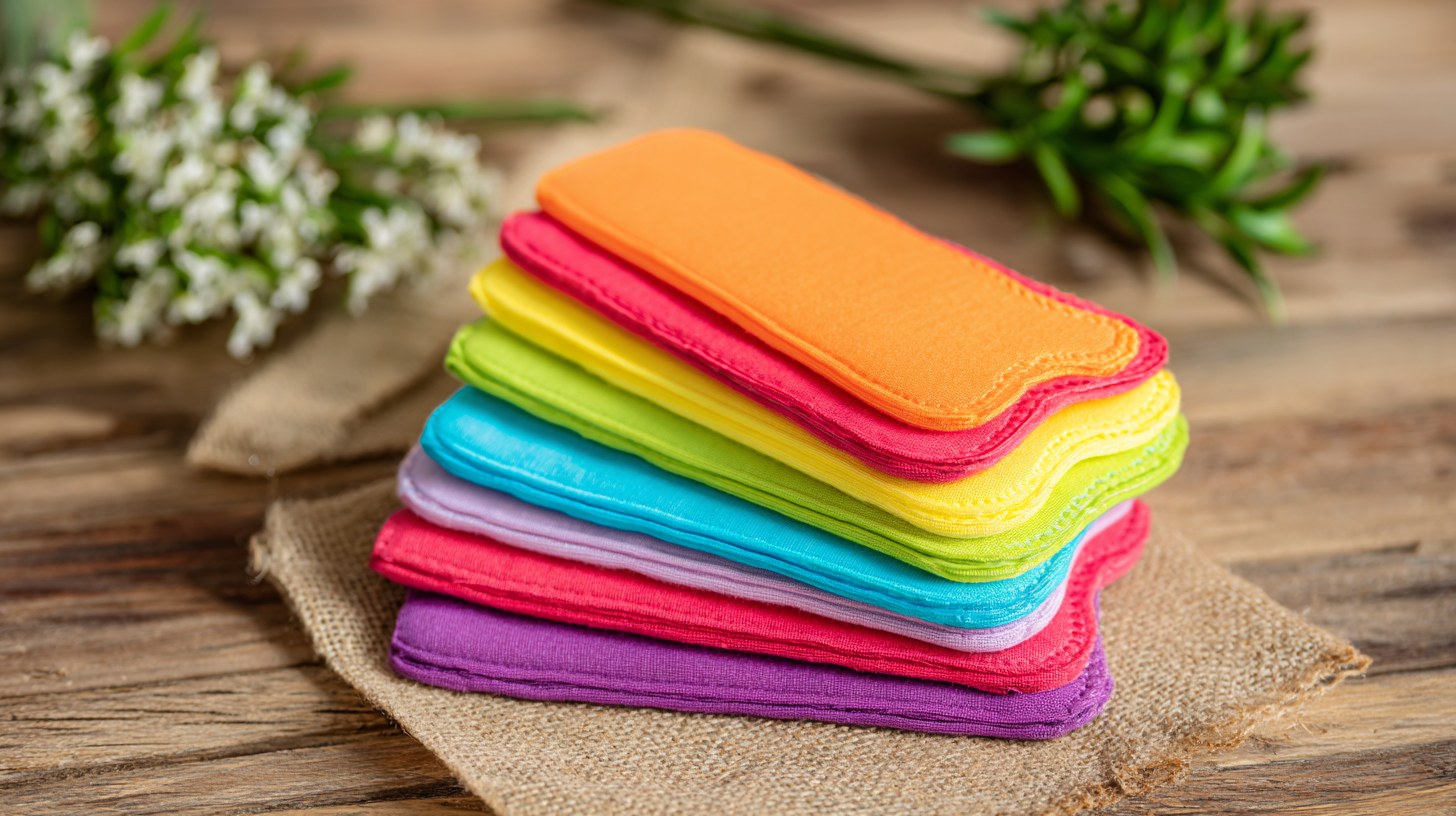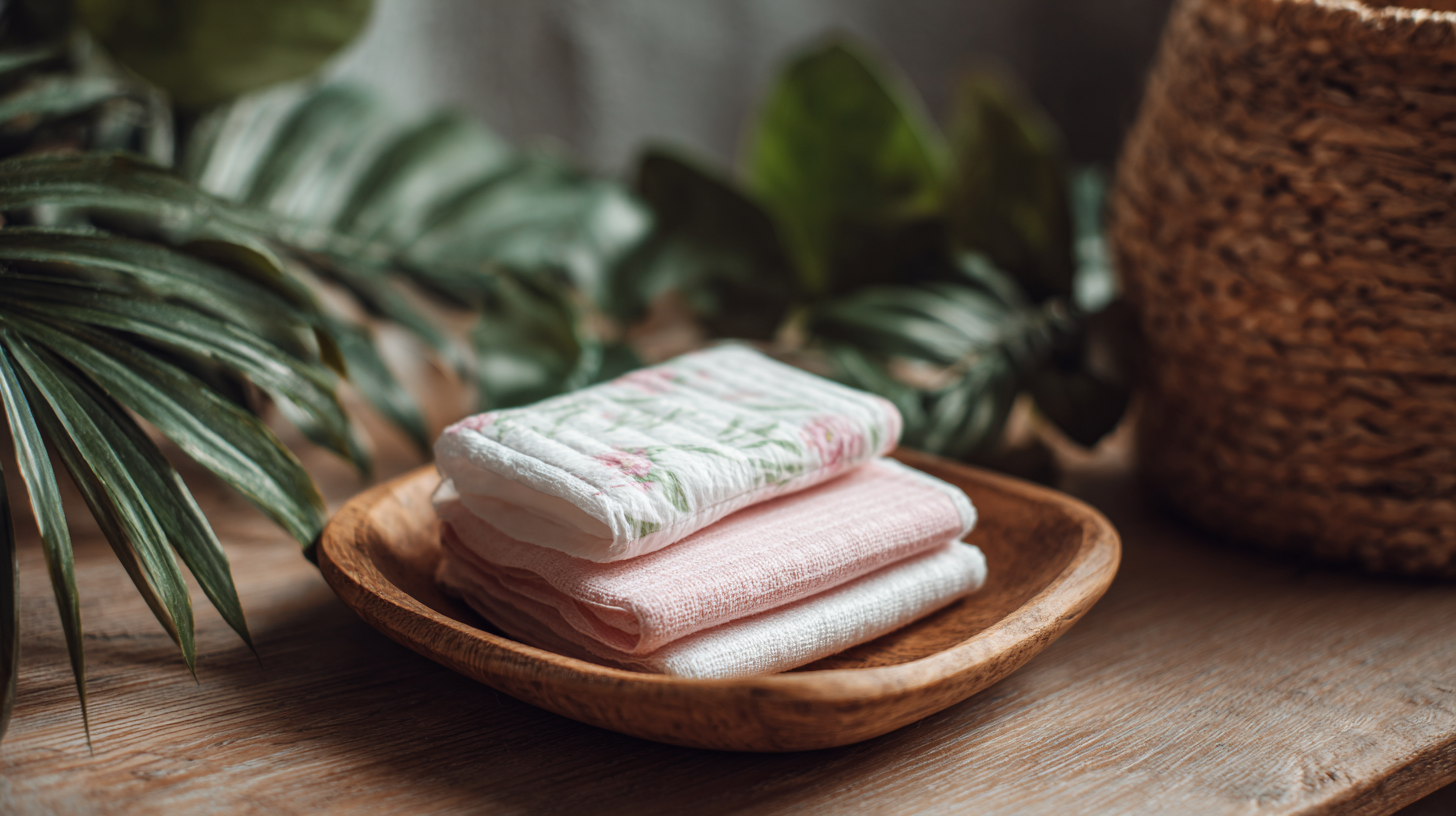
How to Choose the Best Plastic Free Sanitary Pads for Your Eco Friendly Lifestyle
As more individuals seek to adopt eco-friendly lifestyles, the demand for sustainable alternatives in personal care products has surged, particularly for Plastic Free Sanitary Pads. According to a report by Grand View Research, the global market for eco-friendly feminine hygiene products is projected to reach $3.77 billion by 2025, reflecting a growing awareness about the environmental impact of conventional sanitary products. Traditional pads, often laden with plastic, contribute significantly to landfill waste and take centuries to decompose. In contrast, plastic-free options, made from biodegradable materials, are becoming increasingly popular among consumers who prioritize both their health and the planet’s well-being. By making informed choices, individuals can reduce their ecological footprint while embracing comfort and efficacy in their menstrual care. In this blog, we will explore how to choose the best Plastic Free Sanitary Pads that align with an eco-conscious lifestyle, highlighting key features and benefits to consider.

Identifying Your Eco-Friendly Needs: Understanding Plastic-Free Sanitary Pads
 In recent years, the demand for plastic-free sanitary pads has surged as more consumers seek eco-friendly alternatives to traditional feminine hygiene products. A report by the Association of Plastic Recyclers indicates that over 4.5 billion plastic tampon applicators and sanitary pads end up in landfills every year in the United States alone. This alarming statistic highlights the need for women to consider their eco-friendly needs when choosing hygiene products.
In recent years, the demand for plastic-free sanitary pads has surged as more consumers seek eco-friendly alternatives to traditional feminine hygiene products. A report by the Association of Plastic Recyclers indicates that over 4.5 billion plastic tampon applicators and sanitary pads end up in landfills every year in the United States alone. This alarming statistic highlights the need for women to consider their eco-friendly needs when choosing hygiene products.
Understanding the materials used in sanitary pads is crucial for making an informed decision. Many plastic-free options now utilize biodegradable materials such as organic cotton and natural fibers. According to a study by the Environmental Health Perspectives journal, conventional pads often contain harmful chemicals that can leach into the environment as they decompose. By opting for plastic-free pads, consumers not only contribute to reducing plastic waste but also support products that are safer for their bodies and the planet. It’s essential to evaluate your personal preferences, ingredient transparency, and the ethical practices of brands before making a switch to a more sustainable lifestyle.
Key Materials to Look For: The Best Fabric Choices for Sustainability
When selecting plastic-free sanitary pads, the materials used are crucial for ensuring both comfort and sustainability. Look for pads made from organic cotton, which is grown without harmful pesticides and chemicals. Organic cotton is not only biodegradable but also breathable, providing a soft and hypoallergenic option for sensitive skin. Choosing pads with absorbent layers made from natural fibers helps reduce the overall environmental impact while promoting a healthy lifestyle.

Another excellent option is bamboo fabric, celebrated for its rapid growth and minimal resource requirements. Bamboo is naturally antibacterial and highly absorbent, making it an ideal choice for sanitary products. Additionally, explore pads lined with hemp, a versatile material known for its durability and strength. Hemp requires significantly less water and pesticides compared to conventional cotton, making it an eco-friendly alternative for those invested in sustainable practices. By prioritizing these key materials, you can confidently make a choice that aligns with your eco-friendly values while ensuring comfort and reliability during your period.
Examining Certifications: How to Spot Truly Eco-Friendly Sanitary Pads
When it comes to choosing eco-friendly sanitary pads, understanding certifications is crucial. Many consumers want to make informed choices about products that align with their values, but the overwhelming number of brands and claims can be misleading. According to a report by the Ellen MacArthur Foundation, around 300 million menstrual products are used each month in the U.S. alone, and they are made largely from non-biodegradable materials. Therefore, looking for certifications such as GOTS (Global Organic Textile Standard) and OEKO-TEX can help identify truly sustainable options. These certifications ensure that the materials used in the pads are organic, non-toxic, and produced in environmentally responsible ways.
In addition, many brands now carry certifications that indicate their products are plastic-free. The FDA defines plastic as any synthetic or semi-synthetic organic polymer, which can take hundreds of years to decompose. A study published in the journal Environmental Science & Technology found that plastic pads contribute significantly to landfill waste, emphasizing the need for alternatives. By selecting pads that are certified plastic-free, consumers can help reduce the environmental impact while still prioritizing their health. Always ensure that the brands you support are transparent about their ingredient sourcing and production practices, as this transparency is a key marker of a truly eco-friendly product.
Comparison of Eco-Friendly Certifications for Sanitary Pads
Comparing Brands: Top Eco-Conscious Brands for Plastic-Free Options
When it comes to choosing plastic-free sanitary pads, several eco-conscious brands have emerged as leaders in the market. According to a report by Grand View Research, the global eco-friendly sanitary napkin market is projected to reach USD 1.4 billion by 2027, driven by the growing awareness around sustainability and health. Brands like Natracare, Organyc, and the Honey Pot Company are setting high standards by offering biodegradable, organic cotton options that cater to environmentally conscious consumers.
When evaluating brands, consider the certifications they hold, such as GOTS (Global Organic Textile Standard) or OEKO-TEX, which ensure safety and sustainability in their products. Additionally, check for transparency in ingredient lists and ethical sourcing practices. This kind of information can provide reassurance that you are making a responsible choice.
Tip 1: Always look for pads that advertise their eco-friendliness and are certified organic to minimize environmental impact.
Tip 2: Consider trying a subscription service for these products; many eco-friendly brands offer convenient delivery options, helping you maintain your commitment to sustainability without the hassle.
User Reviews and Experiences: Learning from the Community’s Choices
When transitioning to plastic-free sanitary pads, user reviews and experiences offer invaluable insights into the community's choices. According to a 2020 report by the Environmental Protection Agency, approximately 20 billion pads and tampons are disposed of in the U.S. every year, significantly contributing to landfill waste. Users often express their preferences for brands that not only prioritize sustainability but also effectiveness and comfort. For instance, many women have noted that organic cotton pads, free from synthetic materials and chemicals, offer better breathability and reduce the risk of irritation.
Community-driven platforms, such as social media groups and eco-conscious forums, have seen discussions highlighting various brands, such as Natracare and L. They've garnered positive feedback for their biodegradable materials and transparency in sourcing. A survey conducted by the Sustainable Period Products Coalition revealed that about 78% of users reported a noticeable decrease in menstrual discomfort when switching to plastic-free options. This collective wisdom not only assists individuals in making informed choices but also underscores the growing demand for environmentally friendly menstrual products, pushing brands to innovate further in sustainability.
How to Choose the Best Plastic Free Sanitary Pads for Your Eco Friendly Lifestyle - User Reviews and Experiences: Learning from the Community’s Choices
| User | Experience Rating | Comfort Level | Absorbency Level | Eco-friendliness Rating | Comments |
|---|---|---|---|---|---|
| User A | 5/5 | Very Comfortable | High | 5/5 | Love these! No irritation at all. |
| User B | 4/5 | Comfortable | Medium | 4/5 | Great option, could use better absorbency. |
| User C | 3/5 | Okay | Low | 3/5 | Not very effective for heavier days. |
| User D | 5/5 | Extremely Comfortable | Very High | 5/5 | Best pads I’ve used, highly recommend! |
| User E | 4/5 | Comfortable | Medium | 4/5 | Good alternative, eco-friendly. |



